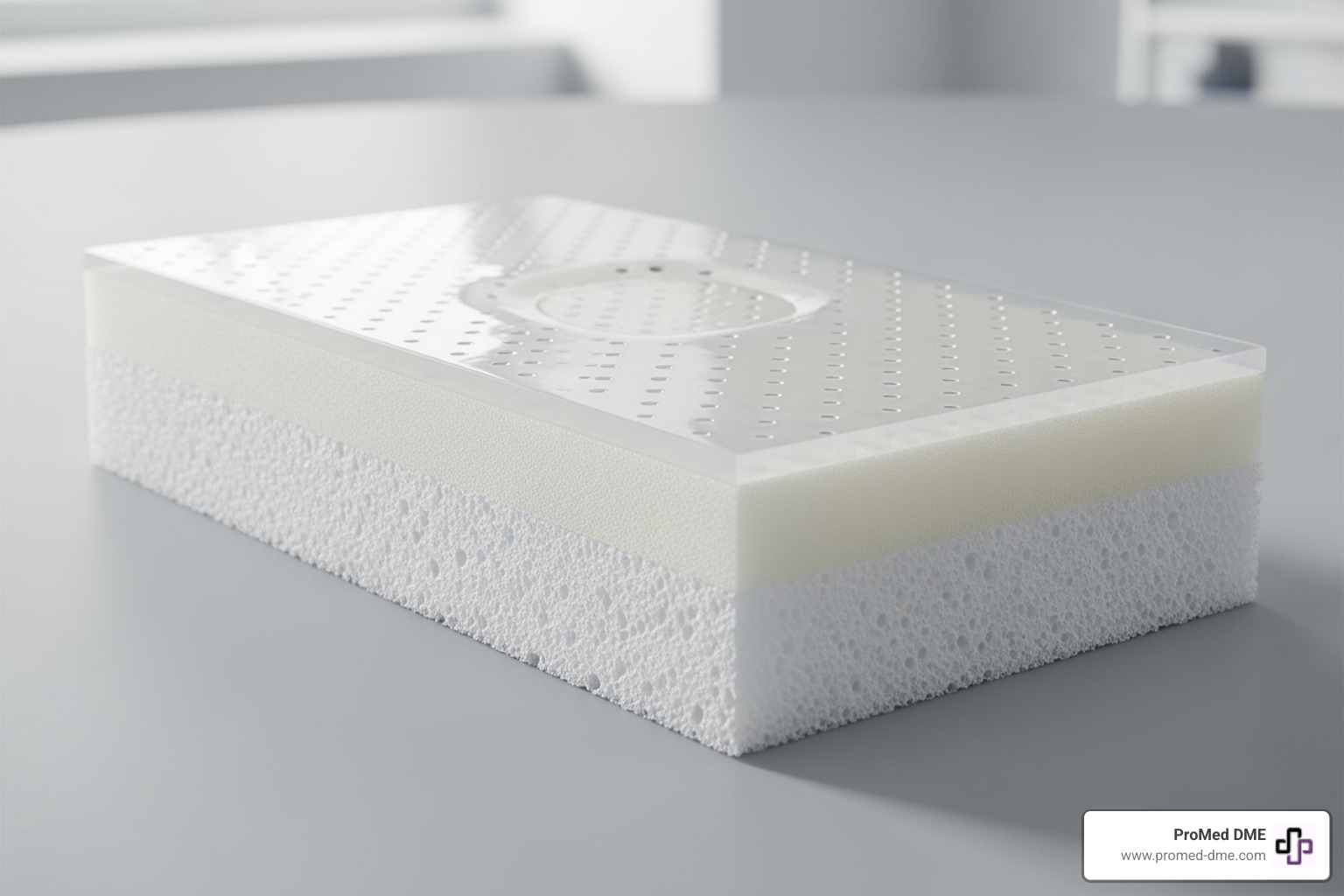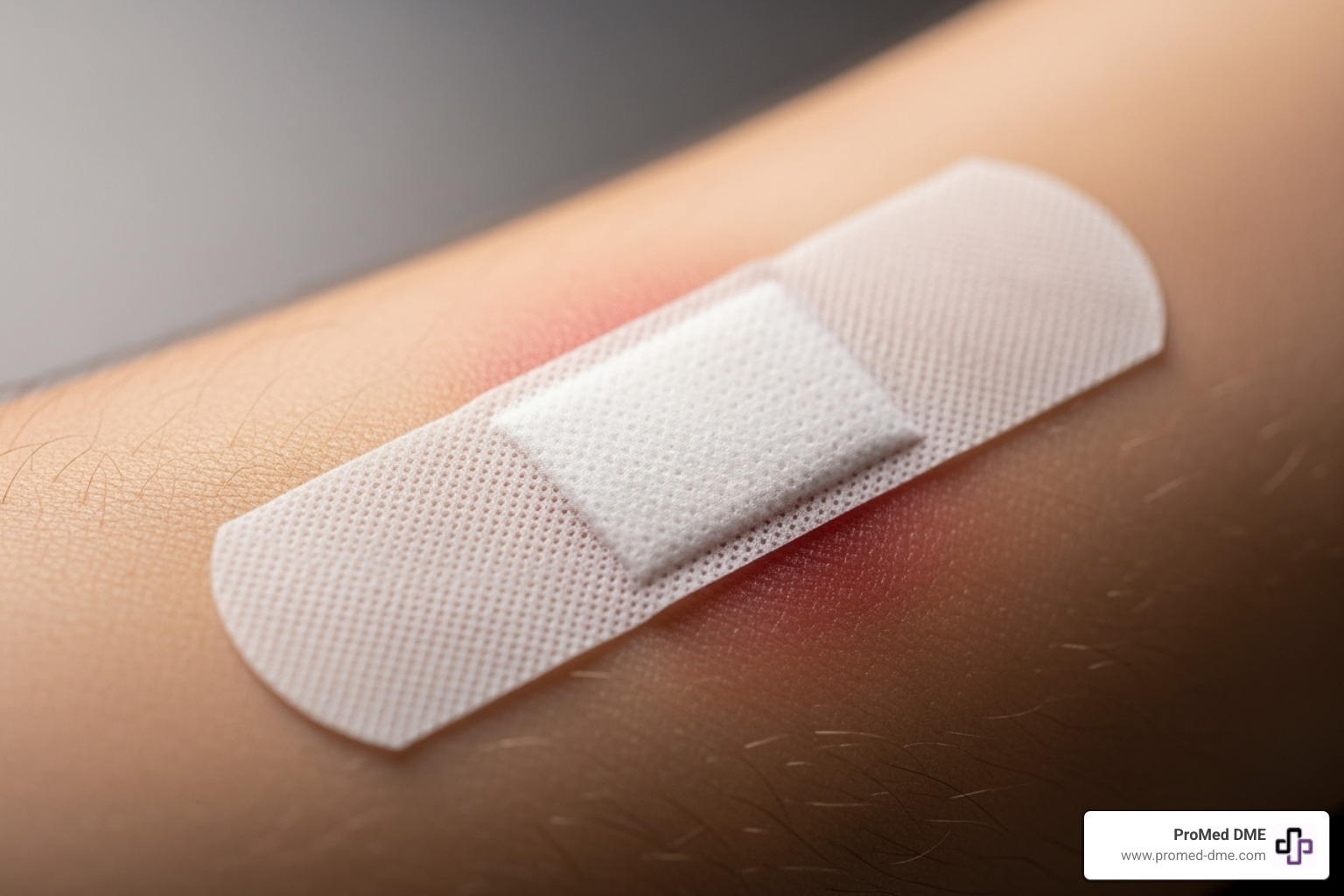Foam Dressing Favorites: A Comprehensive Product Roundup

Foam dressing wound care is an essential aspect of healing that combines comfort and effectiveness. Foam dressings provide a cushioned, moist environment that promotes faster healing while managing exudate levels. They are particularly beneficial for wounds of varying exudate levels, including pressure ulcers and diabetic foot ulcers.
Key Benefits:- Maintains a moist wound environment- Provides cushioning and protection- Manages exudate effectively- Suitable for various wound types, including partial and full-thickness wounds
Foam dressings are designed to keep the wound moist, which can accelerate healing and reduce scarring. They are versatile enough to handle low to high levels of exudate, making them a reliable choice for many types of wounds.
We will guide you through a comprehensive product roundup of foam dressings, helping you steer the features and benefits of various options available on the market. Understanding the nuances of foam dressings is crucial as it equips you with the knowledge to choose the right product for your needs.

Understanding Foam Dressings
Foam dressings are a go-to solution for managing various types of wounds. They offer a unique combination of benefits that make them highly effective in promoting healing. Let's explore the key aspects that make foam dressings indispensable in wound care.
Moist Wound Environment
A moist wound environment is crucial for faster healing. Foam dressings maintain this environment by absorbing excess exudate (wound fluid) while keeping the wound surface appropriately moist. This helps to accelerate the healing process and can even reduce scarring.

Cushioning Effect
One of the standout features of foam dressings is their cushioning effect. They provide a soft and protective layer over the wound, which helps to minimize trauma from external pressures. This is especially beneficial for wounds located on bony areas like elbows and heels, where pressure and friction are common concerns.
Exudate Management
Effective exudate management is a critical function of foam dressings. They are designed to handle varying levels of exudate, from low to high. This capability ensures that the wound remains in an optimal state for healing, preventing issues like maceration (when the skin becomes overly moist and breaks down).
Foam dressings are versatile, suitable for a range of wound types, including pressure ulcers and diabetic foot ulcers. Their ability to adapt to different levels of exudate and provide cushioning makes them a reliable choice in wound care.
In the next section, we will dig into the top foam dressing products available, highlighting their unique features and benefits to help you make an informed choice.
Top Foam Dressing Products
When it comes to foam dressing wound care, choosing the right product can make all the difference. Let's explore some of the top foam dressing options from ProMed DME, each designed to meet specific wound care needs.
ProMed DME ComfortFoam Sacral Dressing
The ComfortFoam Sacral Dressing is all about comfort and protection. It features a silicone adhesive that ensures the dressing stays in place without causing pain during removal. This dressing also acts as a bacterial barrier, safeguarding the wound from infections while maintaining a moist environment for healing.
ProMed DME HydroGuard Foam Dressing
HydroGuard takes wound care up a notch with its hydrofiber technology. This feature provides excellent skin protection by managing moisture levels effectively. It's ideal for wounds with moderate exudate, ensuring the wound stays clean and promotes healing.
ProMed DME FlexiFoam Dressing
FlexiFoam is known for its adaptability. It offers a low friction surface, reducing irritation and promoting comfort. The dressing can be cut to a customizable size, making it perfect for wounds of various shapes and sizes. This flexibility ensures a snug fit, enhancing the dressing's effectiveness.
ProMed DME SecureFoam Hydrocellular Dressing
SecureFoam is designed to create a moist environment, crucial for wound healing. It's perfect for wounds with moderate exudate, offering reliable absorption while maintaining the necessary moisture balance. This dressing is a great choice for patients needing consistent moisture management.
ProMed DME GentleFoam Silicone Dressing
GentleFoam stands out with its Safetac technology, which minimizes pain during dressing changes. This technology ensures the dressing adheres gently to the skin, reducing trauma and discomfort. It's an excellent option for patients with sensitive skin or those who require frequent dressing changes.
Each of these foam dressings brings unique advantages to the table, addressing different wound care needs. Whether you're dealing with sensitive skin or need a dressing that can handle moderate exudate, ProMed DME has a solution for you.
In the next section, we'll explore the benefits and limitations of foam dressings, helping you understand when and how to use them effectively.
Benefits and Limitations of Foam Dressings
Foam dressings are a popular choice in wound care for a reason. They offer several benefits, but like any medical product, they come with limitations. Understanding these can help you make informed decisions for effective wound management.
Moisture Management
One of the key benefits of foam dressing wound care is moisture management. Foam dressings are designed to absorb and retain exudate, keeping the wound bed moist. This is crucial because a moist environment speeds up the healing process and reduces the risk of infection.
High Absorbency: Foam dressings can absorb significant amounts of exudate, making them ideal for wounds with moderate to high fluid output.
Evaporation Control: They help in controlling moisture evaporation, which is essential to prevent the wound from drying out or getting too wet.
Maceration Risk
While moisture is necessary, too much can be harmful. This is where maceration risk comes in.
What is Maceration? It occurs when the skin around the wound becomes overly moist, leading to softening and potential breakdown. This can delay healing and increase the risk of infection.
How to Prevent It: Ensure the foam dressing is changed regularly, especially when it becomes saturated. Monitoring the wound closely can help in mitigating this risk.
Contraindications
Foam dressings are versatile but not suitable for all wound types.
Not for Dry Wounds: Avoid using foam dressings on dry wounds like eschar or necrotic tissue, as they do not provide the necessary moisture to these areas.
Third-Degree Burns: Foam dressings are not recommended for third-degree burns. These wounds require specialized care and often need more advanced dressing solutions.
Balancing Benefits and Limitations
The effectiveness of foam dressings largely depends on choosing the right type for the specific wound and monitoring it closely. While they offer excellent moisture management, be mindful of maceration risks and contraindications. This balance ensures optimal healing and patient comfort.
In the next section, we'll dive into frequently asked questions about foam dressings, providing clarity on their use and potential drawbacks.
Frequently Asked Questions about Foam Dressing Wound
What is a foam dressing used for on a wound?
Foam dressings are a versatile tool in wound care. They create a moist environment that is crucial for speeding up the healing process. By maintaining this environment, they help reduce the risk of infection. The cushioning effect of foam dressings also protects the wound from external trauma, making them ideal for wounds with moderate to high exudate.
When should you not use foam dressing?
While foam dressings are highly effective, they are not suitable for every wound type. Avoid using them on dry eschar or necrotic tissue, as these wounds require moisture to promote healing. Foam dressings are also not recommended for third-degree burns, which need specialized care beyond what foam dressings can offer.
What are the disadvantages of foam dressing?
Despite their benefits, foam dressings have some limitations. One potential drawback is the risk of desiccation, or drying out, if the dressing is not changed appropriately. This can happen if the dressing's absorption capacity is exceeded. Additionally, they often require a secondary dressing to hold them in place, which can add complexity to wound care management.
By understanding when and how to use foam dressings, you can maximize their benefits while minimizing potential drawbacks. In the next section, we'll explore more about how to choose the right foam dressing for your needs.
Conclusion
When it comes to wound care, selecting the right product is essential for effective healing and patient comfort. At ProMed DME, we pride ourselves on offering top-quality foam dressing wound solutions that cater to a variety of wound types and healing stages. Our commitment to excellence ensures that healthcare providers and patients receive only the best products, backed by our exceptional customer service.
Why Choose ProMed DME?
We understand that wound care is a critical component of healthcare, and the right dressing can significantly impact recovery. That's why we offer a diverse range of foam dressings, each designed to meet specific wound care needs. Whether you're dealing with moderate exudate or require a dressing with a bacterial barrier, we have a solution for you.
Our products, like the ProMed DME ComfortFoam Sacral Dressing and the ProMed DME HydroGuard Foam Dressing, are designed with advanced technologies to provide optimal healing environments. These dressings not only manage moisture but also protect wounds from external contaminants, ensuring a safe and effective healing process.
Customer-Centric Approach
At ProMed DME, we believe that customer service is just as important as the products we provide. Our dedicated team, including a nurse on staff, is always ready to assist with any questions or concerns you may have. We work with most insurance plans to minimize out-of-pocket expenses, making high-quality wound care accessible to everyone.
Plus, with free shipping across the United States, receiving your wound care supplies has never been easier. We are committed to supporting you on your health journey, providing not just products but also the guidance and care you need.
Ready to explore our range of foam dressings and other wound care products? Visit our Wound Care page to learn more and find the best solutions for your needs.
By choosing ProMed DME, you're not just selecting a product; you're partnering with a company dedicated to your health and well-being.
Related Resources & Articles
Stay informed with our informative blog posts.
Discover the ProMed Advantage
& Try Our Products
We offer free shipping and legendary customer service to ensure you receive the
best DME products for your needs.



